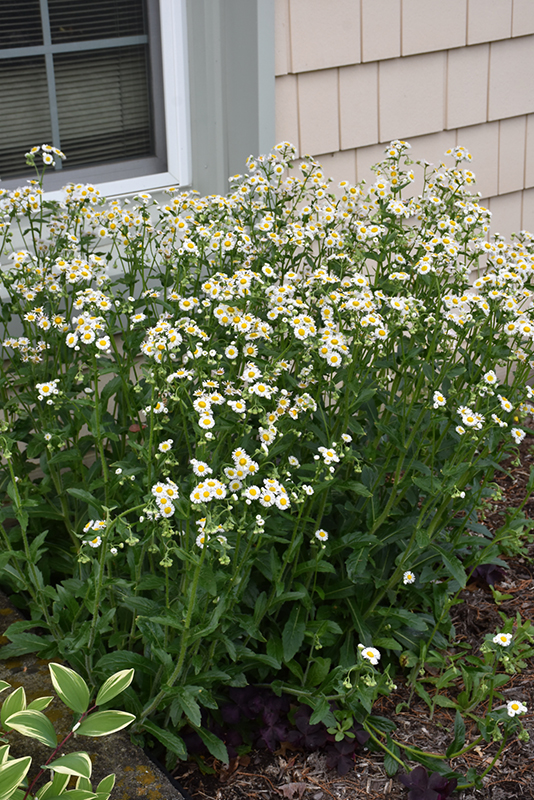Plant Height: 12 inches
Flower Height: 24 inches
Spacing: 12 inches
Sunlight:
![]()
![]()
Hardiness Zone: 4
Other Names: Fleabane Daisy
Description:
An aster-like, short lived perennial featuring volumes of small, white to pale violet, daisy like flowers in spring, rising above a basal clump of green, paddle shaped foliage; perfect for naturalizing, or creating a wildflower garden
Ornamental Features
Robin's Plantain has masses of beautiful semi-double white daisy flowers with violet overtones and yellow eyes at the ends of the stems from mid spring to early summer, which are most effective when planted in groupings. The flowers are excellent for cutting. Its serrated narrow leaves remain green in color throughout the season.
Landscape Attributes
Robin's Plantain is an herbaceous perennial with tall flower stalks held atop a low mound of foliage. Its medium texture blends into the garden, but can always be balanced by a couple of finer or coarser plants for an effective composition.
This is a relatively low maintenance plant, and is best cleaned up in early spring before it resumes active growth for the season. It is a good choice for attracting bees and butterflies to your yard, but is not particularly attractive to deer who tend to leave it alone in favor of tastier treats. Gardeners should be aware of the following characteristic(s) that may warrant special consideration;
- Suckering
- Self-Seeding
Robin's Plantain is recommended for the following landscape applications;
- Mass Planting
- General Garden Use
- Naturalizing And Woodland Gardens
Planting & Growing
Robin's Plantain will grow to be about 12 inches tall at maturity extending to 24 inches tall with the flowers, with a spread of 24 inches. When grown in masses or used as a bedding plant, individual plants should be spaced approximately 12 inches apart. Its foliage tends to remain dense right to the ground, not requiring facer plants in front. It grows at a fast rate, and under ideal conditions can be expected to live for approximately 3 years. As an herbaceous perennial, this plant will usually die back to the crown each winter, and will regrow from the base each spring. Be careful not to disturb the crown in late winter when it may not be readily seen!
This plant does best in full sun to partial shade. It is very adaptable to both dry and moist growing conditions, but will not tolerate any standing water. It is considered to be drought-tolerant, and thus makes an ideal choice for a low-water garden or xeriscape application. This plant does not require much in the way of fertilizing once established. It is not particular as to soil pH, but grows best in poor soils. It is somewhat tolerant of urban pollution. This species is native to parts of North America. It can be propagated by division.

